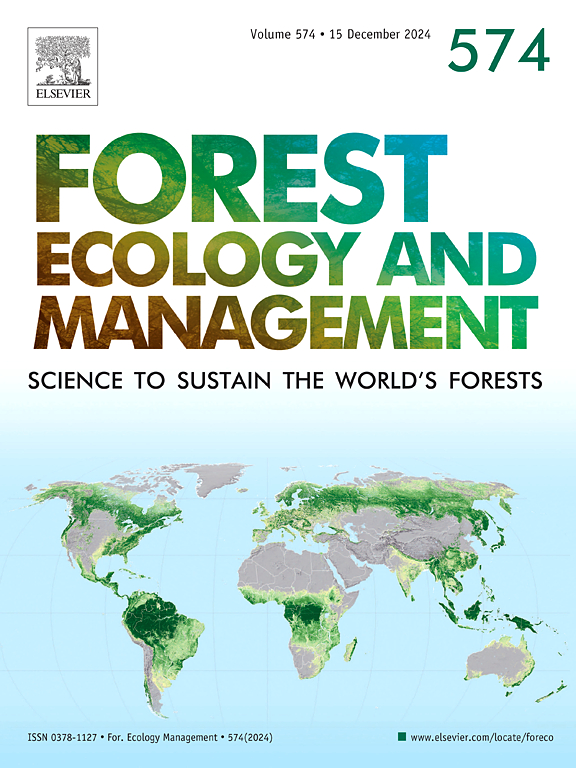Harnessing stemflow as a diagnostic tool for canopy disease detection and monitoring
IF 3.7
2区 农林科学
Q1 FORESTRY
引用次数: 0
Abstract
Monitoring diseases within tree canopies is challenging due to their inaccessibility and the complexity of canopy ecosystems. Here, we explore the potential of stemflow sampling as a novel, ground-based method for detecting and monitoring canopy-associated pathogens. In a case study focused on Litylenchus crenatae ssp. mccannii (LCM), the nematode associated with Beech Leaf Disease (BLD), we collected stemflow samples from 18 Fagus grandifolia Ehrh. (American beech) trees across 12 storm events. eDNA assays detected LCM presence in 7 of those storms, with quantitative PCR-derived gene concentrations ranging from 80 to 158,000 copies mL−1. Higher detections and concentrations coincided with leaf senescence and bud formation periods, and they correlated conditionally with event rainfall amount and pre-storm changes in relative humidity. Although based on a single site and season, these findings demonstrate the potential for stemflow sampling to capture a pathogen’s eDNA (i.e., canopy distress signals) at ground level. This method could complement traditional monitoring, offering another affordable, non-invasive tool for pathogen detection. Additional validation, particularly regarding live versus dead organisms and across varied site conditions, will be essential to evaluate the breadth of value stemflow eDNA offers for canopy disease management and ecological research.
求助全文
约1分钟内获得全文
求助全文
来源期刊

Forest Ecology and Management
农林科学-林学
CiteScore
7.50
自引率
10.80%
发文量
665
审稿时长
39 days
期刊介绍:
Forest Ecology and Management publishes scientific articles linking forest ecology with forest management, focusing on the application of biological, ecological and social knowledge to the management and conservation of plantations and natural forests. The scope of the journal includes all forest ecosystems of the world.
A peer-review process ensures the quality and international interest of the manuscripts accepted for publication. The journal encourages communication between scientists in disparate fields who share a common interest in ecology and forest management, bridging the gap between research workers and forest managers.
We encourage submission of papers that will have the strongest interest and value to the Journal''s international readership. Some key features of papers with strong interest include:
1. Clear connections between the ecology and management of forests;
2. Novel ideas or approaches to important challenges in forest ecology and management;
3. Studies that address a population of interest beyond the scale of single research sites, Three key points in the design of forest experiments, Forest Ecology and Management 255 (2008) 2022-2023);
4. Review Articles on timely, important topics. Authors are welcome to contact one of the editors to discuss the suitability of a potential review manuscript.
The Journal encourages proposals for special issues examining important areas of forest ecology and management. Potential guest editors should contact any of the Editors to begin discussions about topics, potential papers, and other details.
 求助内容:
求助内容: 应助结果提醒方式:
应助结果提醒方式:


